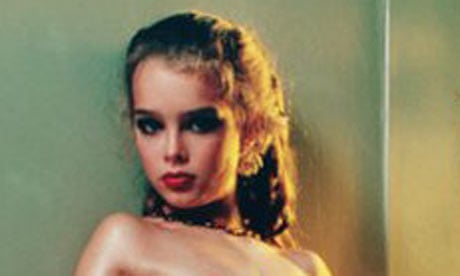The Richard Prince photograph of Brooke Shields that Tate Modern recently withdrew from the exhibition Pop Life, after Scotland Yard suggested it might break obscenity laws, travelled across the Atlantic carrying a long history of controversy. It shows a 10-year-old Shields, oiled and glistening, naked and made-up, posing in a marble bathtub with a seductive danger that belies her years. She has, in Prince’s description, “a body with two different sexes, maybe more, and a head that looks like it’s got a different birthday.”
When artist Collier Schorr sublet Prince’s studio in the 1980s, the photograph was hanging in the hallway. “I always thought that it was a perverse picture,” says Schorr, who has since made a documentary about Prince, and befriended Shields when she photographed the actor/model last year for Interview magazine. “I found it really disturbing, but my impression always was that Richard made the piece because it was disturbing ... It tells you everything about what we fear and desire.”
Prince, Schorr tells me, has never met Shields. Intent on questioning notions of authorship and originality, he rephotographed an existing image that had already inspired two years of legal debate. The original picture, for which Shields was paid $450, was taken by fashion photographer Garry Gross in 1975 for a Playboy publication titled Sugar and Spice. It was one of a dozen images of Shields designed, according to Gross, to reveal the not-so-latent sexuality of the prepubescent child.
Though the pictures were taken with her consent, in 1981 Shields’s mother sued Gross on the grounds that his continuing sale of them was damaging to her daughter’s reputation, and she obtained a provisional ban on their further use. By then Shields, who began modelling at 11 months, had achieved national notoriety: she starred as a child prostitute in Louis Malle’s 1978 film Pretty Baby, which included a scene in which her virginity is auctioned, and in 1980 she starred in Richard Avedon’s provocative advertising campaign for Calvin Klein Jeans.
“You know what comes between me and my Calvins?” the 15-year-old Shields asked in one ad, which was censored by American TV networks, “Nothing!”
Gross’s lawyers argued that his photographs could not further damage Shields’s reputation because, since they were taken, she had made a profitable career “as a young vamp and a harlot, a seasoned sexual veteran, a provocative child-woman, an erotic and sensual sex symbol, the Lolita of her generation”. The judge concurred and, while praising the pictures’ “sultry, sensual appeal”, ruled that Gross was not a pornographer: “They have no erotic appeal except to possibly perverse minds.” That decision was overturned by an appeals court, but in 1983 the original verdict in Gross’s favour was upheld.
Prince appropriated Gross’s image later that year, renaming it Spiritual America (after a 1923 picture by Alfred Stieglitz of a gelded horse’s midriff and genitals), and exhibited it anonymously in a rented shopfront in New York’s Lower East Side. He later explained that the two-year legal debate about Gross’s image, and the final ruling against censorship, had made him feel “patriotic”. Prince enshrined it as a kind of coda to celebrate freedom of expression.
“Brooke Shields didn’t have a problem making that picture,” Schorr says, “because she was playacting in front of the camera and that’s what she does. I don’t think she ever felt like she was a victim of his camera, I think she felt like she was a victim of his greed, and to some extent a victim of her mother’s poor judgment. I think she was happy when Richard took the picture and made something of it because it was a big fuck you to Garry Gross.”
Not keen to embark on another expensive legal case, when Prince asked for permission to feature the work in his 1992 show at the Whitney museum in New York, Gross settled for $2,000 offered by Prince’s lawyer. The photograph was the title work of Prince’s 2007 retrospective at the Guggenheim in New York, where it appeared without incident.
Gross, 71, continues to exercise his right to sell pictures of Shields, though eBay prevented him from auctioning prints of them on its site. He is now a dog photographer and trainer in New York. In January 2008, one of Prince’s pictures, an untitled image of a cowboy, sold for $3.4m, the most expensive photograph ever sold at auction.
